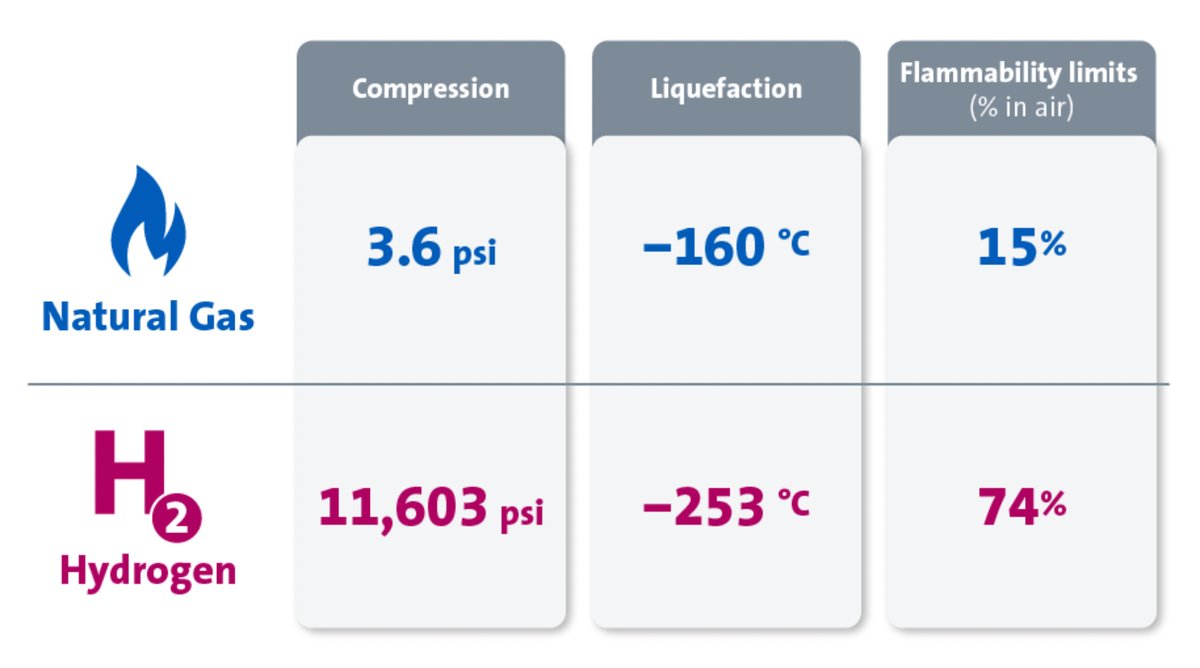
1/ In August, German Chancellor Olaf Scholz led a delegation of senior political and business leaders on a trip to Canada to beg Canadian Prime Minister Justin Trudeau to consider fast-tracking the approval of new LNG export facilities along Canada’s Atlantic Coast. 

2/ Despite historic spreads between the price of natural gas in North America and the rest of the world, the drama-teacher-turned-cosplay-Prime-Minister professed to be unable to find a compelling business case for the proposal.
3/ In Trudeau’s fossil fuel-free vision of the future, such investments will be obsolete before they could generate an economic return. How embarrassing it must have been for Scholz to submit himself to the whims of the ultimate “legacy” admission to the political arena.
4/ Instead, the two countries entered into a bizarre agreement to develop a “transatlantic hydrogen supply chain.” We were a little dumbfounded when saw these headlines. Surely, this must be a joke?
5/ Alas, like much of what emanates from the current slate of Western leaders, the two countries appear to be as serious in intent as they are unserious in understanding.
6/ To appreciate why the hydrogen alliance between Canada and Germany is all but guaranteed to be an epic flop that incinerates any and all subsidies lavished onto the initiative, we must first understand what is actually being proposed.
7/ While many important details are left murky, information in the public domain reveals four stages envisioned for this centrally planned green energy utopia. First, the plan calls for a massive deployment of new wind farms along the Island of Newfoundland’s western coast.
8/ The area is ideal for capturing energy from intense west-to-east winds coming off the Atlantic Ocean – Newfoundland is the windiest region in Canada, and the jet stream passes right over the island – and this part of the plan is at least reasonably feasible.
9/ Second, the electricity thus generated is to be transmitted to centralized hubs that require significant investment in new infrastructure. Once the wind farms are up, running, and connected, the third step is to produce hydrogen on a massive scale via electrolysis.
10/ Here, Germany contributes significant technological expertise. Engineering giants like Siemens AG have been investing large sums to perfect the technology, and they are undoubtedly at the cutting edge.
11/ Now for step four – the hard part. Even assuming the above scheme produces hydrogen at a globally competitive price (color us skeptical), by what means are large volumes of hydrogen supposed to be transported from Newfoundland to Europe?
12/ Certainly not directly, although many reports and press releases imply as much, falsely assuming that shipping hydrogen will be as “simple” as shipping LNG. The inherent differences between hydrogen and natural gas make shipping the former extremely challenging. 

13/ While some industry experts think shipping hydrogen might become commercially viable “sometime in the mid-2030s,” others are more skeptical and see no scenario where it makes economic sense for hydrogen-laden vessels to float across the seas.
14/ With no realistic ability to ship hydrogen directly anytime soon, aspiring grifters – err, green hydrogen proponents – intend to transform hydrogen to ammonia and ship that molecule instead. This is where things truly descend into fantasy.
15/ While the notion of using carbon-free energy to produce hydrogen to produce ammonia is indeed seductive, making ammonia using hydrogen derived from wind energy in Newfoundland (where no Haber-Bosch plants exist) for ultimate use in Germany, is insane.
16/ There is a better way. Let’s consider that Germany is interested in being a global leader in the new, “carbon-free” hydrogen economy. Ammonia is easily one of the most important industrial chemicals manufactured today.
17/ Its production currently relies on either coal or natural gas to make hydrogen, which is then combined with nitrogen from the air to produce the fertilizer. Roughly 2% of total global carbon emissions can be traced to the direct production of ammonia.
18/ Germany has three nuclear power plants still running and a fleet of recently mothballed facilities. The country also has several ammonia production plants that have been made globally uncompetitive because of elevated natural gas prices.
19/ If the goal is to land “carbon-free” ammonia in Germany, simply turn the retired nuclear power plants back on and dedicate them to the production of ammonia! Compare the capital costs and technology risks associated with the Canada-Germany deal to our simple proposal: 

20/ The benefits are plentiful. First and most importantly, the project would serve as a demonstration that carbon-free ammonia can be produced at industrial scale. It would also de-risk the buildout of massive hydrogen production plants and their associated infrastructure.
21/ This plan minimizes capital costs and results in the production of green ammonia far quicker than the preposterous hydrogen-from-Canada scheme. It also circumvents the need for shipping and the resulting carbon emissions such long journeys across the Atlantic would entail.
22/ Instead of building out an entire fleet of wind turbines, the associated transmission lines, new hydrogen infrastructure, and new world-scale ammonia plants, only the transmission lines and hydrogen infrastructure are needed in Germany – a comparatively simple task.
23/ Our plan also represents a face-saving way for the German Greens to relent on their absurd (and borderline treasonous) opposition to nuclear power. It can be sold as an important demonstration project that accelerates the onset of a clean hydrogen utopia.
24/ Lastly – and perhaps most importantly – the world desperately needs more fertilizer! While primary energy prices in Europe are well off their blowoff-top highs, global ammonia prices are still near their peak, trading for approximately five times the historical average. 

25/ Restarting Germany’s nuclear plants to make green ammonia would be a potent demonstration of nuclear power’s inherent advantages over intermittent renewables. For this reason alone, we are under no illusions that this plan will be supported. For shame. <fin> 

• • •
Missing some Tweet in this thread? You can try to
force a refresh









